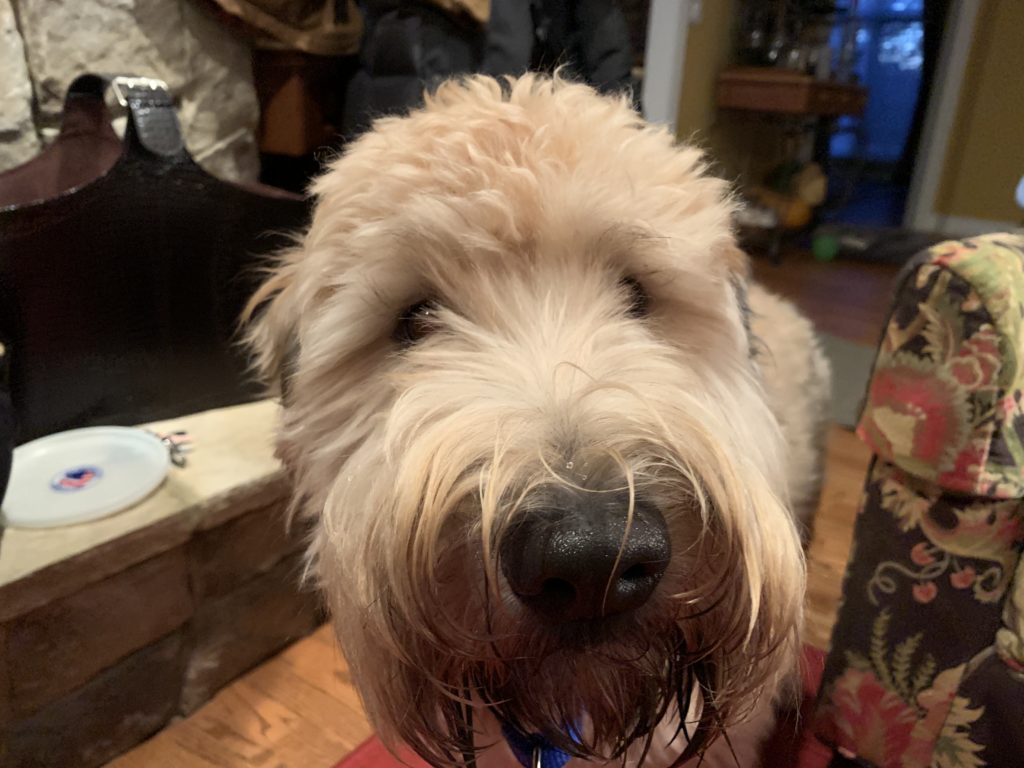Teaching an Anxious Dog Hand Targeting to Help His Engagement and Recall
By: David Codr
Published Date: November 13, 2019
For this Omaha dog training session we worked with a very anxious 1 year-old Wheaton Terrier named Teddy, sharing tips to build up the dog’s confidence and self esteem.
Knowing that Teddy often barked at strangers, we met outside using a positive reinforcement approach I have developed over the years. As a dog behavior expert, I learned long ago that meeting outside offers a number of advantages when you have an anxious dog; distractions, multiple escape routes and being outside of the dog’s primary area.
When we got inside, the dog showed clear signs of stress. He consistently snapped his head around, kept considerable distance from us and jumped at any unexpected sound. These are all classic signs of cortisol, the stress hormone, in the dog’s blood.
I shared a number of tips that should help. Things to do (building up his confidence by rewarding desired behaviors) and things not to do (pet a dog when it’s anxious or repeat the same words when the dog is nervous or anxious). We also went over petting with a purpose and how rules can help a dog feel more comfortable with its humans leadership.
One of the techniques I used was bread crumbing the dog; tossing treats in a strategic way that encouraged and rewarded the dog for approaching me on his own terms.
I had made considerable progress with Teddy with my breadcrumb approach and 3/4 of the way through the session, I was able to pet him without him moving away. Unfortunately I hit a set back when I transitioned from petting under his chin to the top of his head. I made sure to point out to the guardians that they should direct all guests to only pet him under his chin or on his body when they get to the point where the dog is comfortable enough to allow petting.
One of the other issues Teddy’s guardian was refusing to come to one of his guardians when called. I recommended they change the command word to “here,” make an effort to pet him and say “here” when Teddy comes on his own (Passive training) and use a sneaky smart way to condition a dog to come to you without even calling to the dog. If the guardian follows the steps in that video, Teddy will be coming a running much better (provided no squirrels are around, lol).
Just in case, here is the recall tutorial video we share with people in our puppy classes. I covered this in the session, but having a specific training video always helps.
One of the things we tried to teach was a hand targeting exercise. We were able to practice a little bit and go through the basics, but due to his anxiety – we were limited. I promised I would include a hand targeting instructional video in this write up so they can practice after we left and Teddy was more relaxed and comfortable.
Teaching a dog a hand targeting command is very beneficial for engagement. Its an exercise we often use with anxious or fearful dogs as its a good way to get them to engage under the premise of doing something else. Training a dog to target your hand is also a nice auxiliary way to ask a dog to come.
There were a number of other tips we covered in this in home Omaha dog training session. To help Teddy’s guardians remember them all, we recorded a roadmap to success video you can watch below.
Categorized in: Dog Behavior


